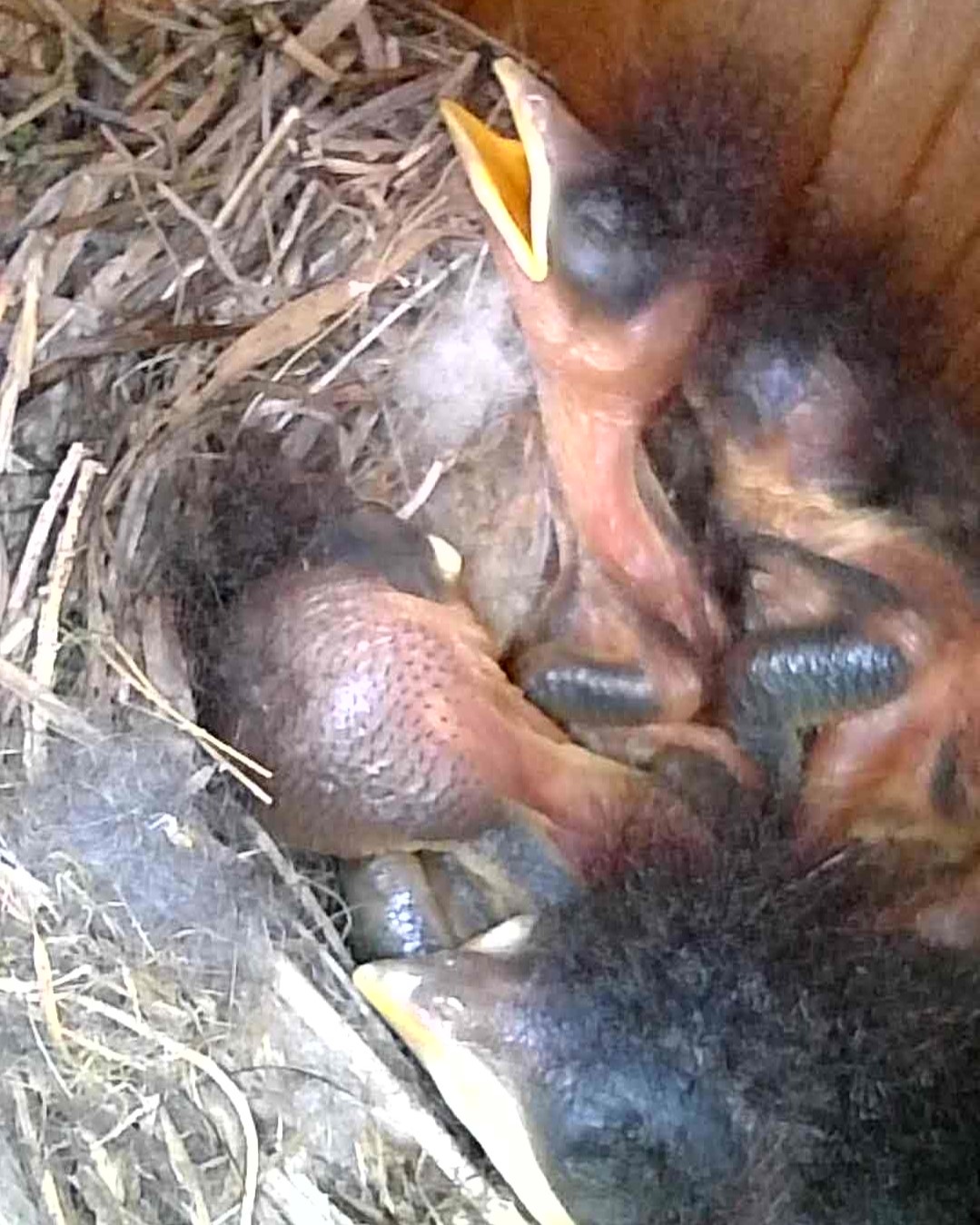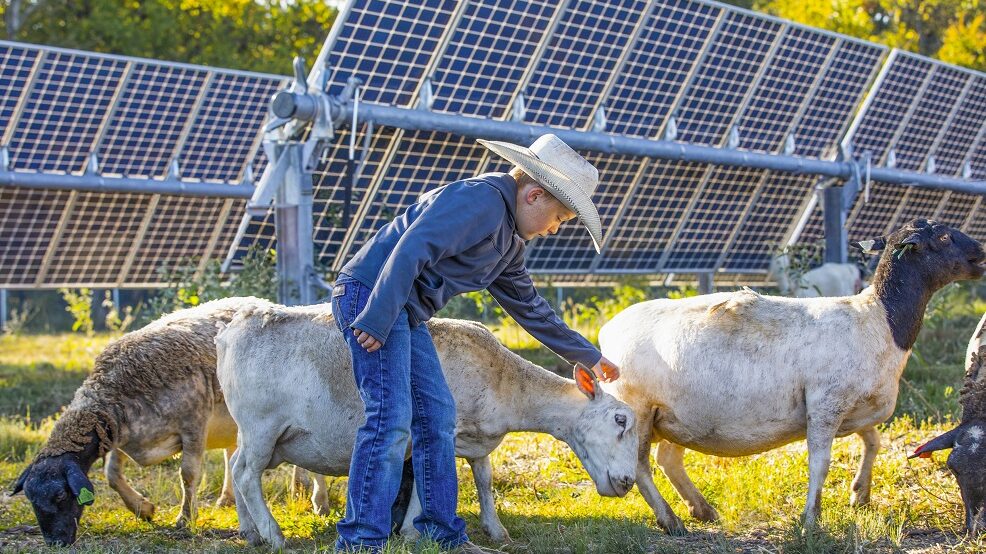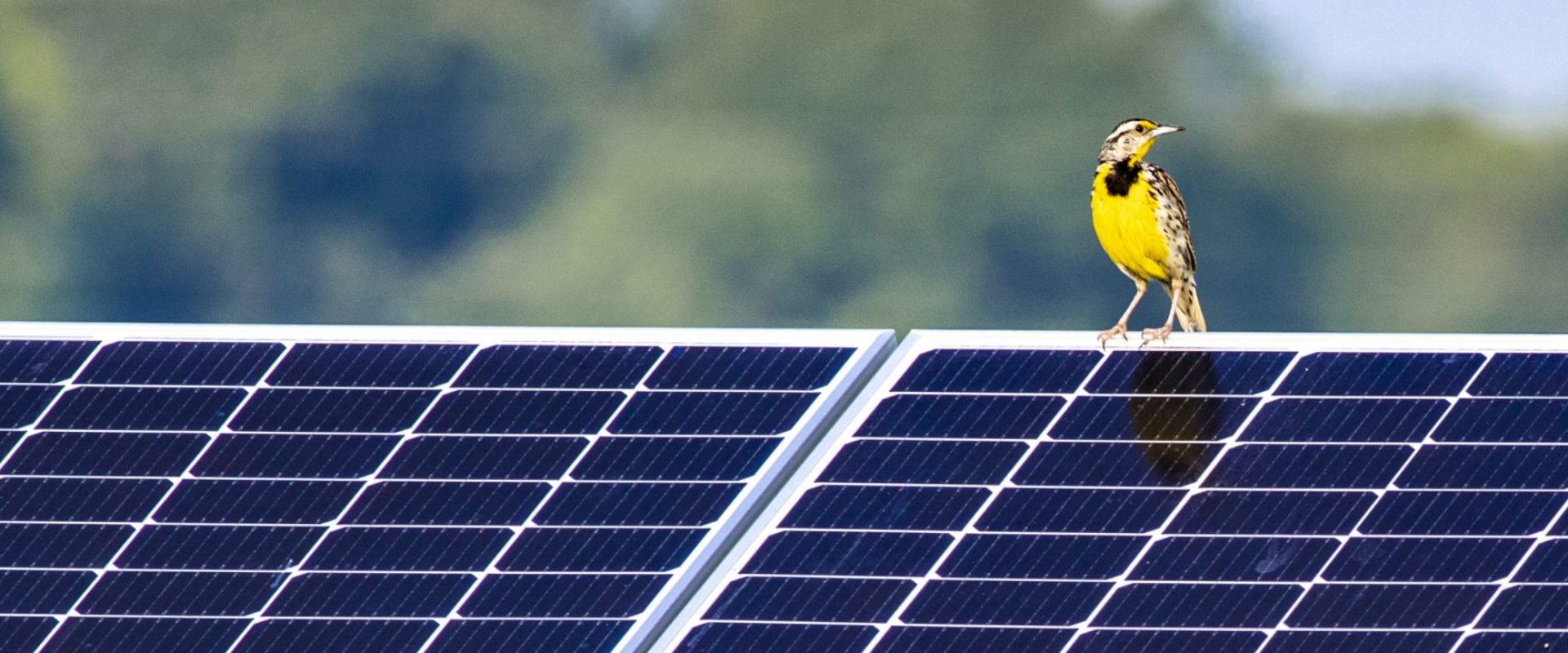Preserving habitat and integrating agriculture at Impact Solar, three years in
After more than three years of commercial operation, the Impact solar farm in Lamar County, Texas provides great insights into the value of multiuse solar for energy, people and the environment.
The 260MWdc solar farm came online in early 2021, complete with several wildlife habitat enhancements and long-term biodiversity and land management plan. Later on, we introduced a large-scale sheep ranching operation to the site, which quickly became the largest year-round solar grazing site in the country.
Keep reading to learn about the ecosystem and social benefits this project is creating as of spring 2024.
Developed for success
Before it was a solar farm, the Impact Solar site was primarily agricultural pasture and cropland, featuring small areas of native riparian, woodland, and grassland ecosystems. In developing the project, Lightsource bp created a detailed biodiversity management plan outlining specific plans to protect and enhance these valuable patches of native habitat.
The plan included numerous voluntary strategies, which would layer several conservation strategies over more than 1,000 acres, including:
- Two native pollinator gardens across 10.5 acres, including native grasses and 14 flowering plant species
- Custom seed mix planted under and around the solar panels, designed to grow diverse sources of food and shelter for pollinators and other wildlife
- “Hibernacula” for reptiles, amphibians and mammals
- Bird and bat nesting boxes
- Long-term protection of 50 acres of riparian woodland habitat adjacent to a local waterway
Enhancing wildlife habitat
With a diverse mix of native grasses and flowering plants growing across the site, Impact Solar provides a long-term home for small wildlife. To ensure that these creatures find safe spaces to raise their young, Lightsource bp established specialized habitat structures across the site.
Several areas feature hibernacula for reptiles, amphibians and mammals, consisting of an underground hole, backfilled with rocks, and covered with logs and soil for insulation and to mimic nature. Each habitat area is located safely upland, with access to water, sunlight, open grass, and trees.
To provide habitat for birds and bats, weplaced artificial nesting and roosting structures throughout the Impact Solar site as well. These bird and bat boxes are located near woodland areas and spaced to avoid competition and predators.

Look who hatched in an Impact Solar bird box spring 2024!
Promoting pollinator conservation
Pollinators such as butterflies, bees, birds and bats support plant reproduction and reinforce strong and resilient ecosystems. Three-fourths of the world’s flowering plants and about 35 percent of the world’s food crops depend on animal pollinators to reproduce. Some scientists estimate that one out of every three bites of food we eat exists because of animal pollinators. Habitat loss, climate change, and agricultural pesticide use have caused a great decline in pollinator populations. To support these species, Lightsource bp is creating and managing vegetation to support pollinator populations at our solar farms.
At Impact Solar, we have designated 10.54 acres to support two high-density pollinator gardens. The sites were prepped and planted in 2022, with a native seed mix including American basketflower , purple coneflower, lanceleaf coreopsis, Indian blanket , purple prairie clover, white prairie clover, lemon mint, Golden-Wave, plains coreopsis, black-eyed Susan, butterfly weed, Texas bluebonnet, cutleaf daisy, and partridge pea. The garden is expected to take 2-3 years to fully establish, while these plants establish deep root systems below the soil.
Grazing sheep at the solar farm
During it’s second year of operation, Impact Solar had grown so much vegetation that mechanical mowing was no longer the most cost-effective maintenance method. Lightsource bp enlisted a Texas ranching family to help via solar grazing, a form of agrivoltaics that introduces sheep to solar farms. This keeps the land in agricultural production throughout the solar project’s life, while providing an eco-friendly and effective solution to “mowing the lawn”.

The ranchers originally brought about 600 sheep to site, but quickly recognized an opportunity to further scale their business. By 2022, more than 2,000 sheep were chomping on vegetation under and around the solar panels. It is thought to be the largest year-round grazing site in the United States.
As they eat, the sheep will spread manure to fertilize the soil. Sheep also attract beneficial insects and combat invasive weeds as they forage. Watch our video to meet the solar shepherds caring for the flock and to learn more.
Protecting riparian woodlands
Riparian ecosystems, located adjacent to rivers and streams, are important for biological diversity. Wildlife use these areas to travel across the landscape for food, cover, and breeding. These high-value ecosystems systems tend to be less disturbed, and therefore are more prone to function as protected species habitat than upland areas.
Within the Impact Solar site boundaries, approximately 50 acres of woodland habitat adjacent to the floodplain of the Bee Bayou will remain undisturbed and in conservation for the up to 40 year lifespan of the project. This will help encourage wildlife movement throughout the area, protect water quality and reduce soil erosion.
Discover Multiuse Solar
This project is one example of our commitment to co-locating responsibly sited solar projects with other land uses in the United States—an approach dubbed “dual-use solar.” Lightsource bp often goes a step further, building multiuse solar projects where clean energy generation shares land with multiple initiatives including agriculture, conservation, and research.
03 Apr, 2025
Community hospital check presentation, job fair kick off Lightsource bp Jones City energy center in Jones County, Texas
Community partnerships in Texas
19 Feb, 2025
Video: Honeysuckle Solar drives American manufacturing close to home
Indiana project includes locally manufactured parts




